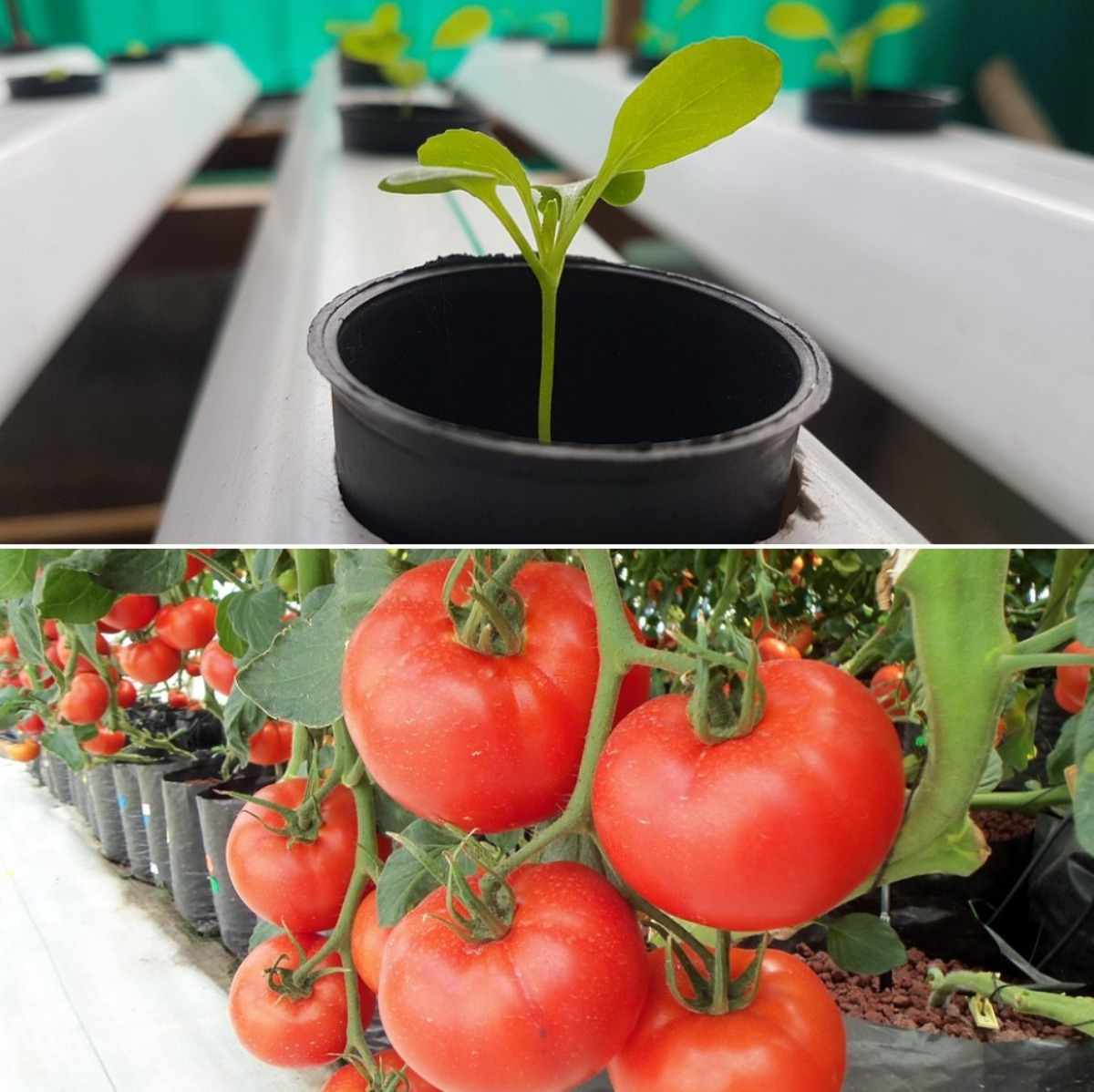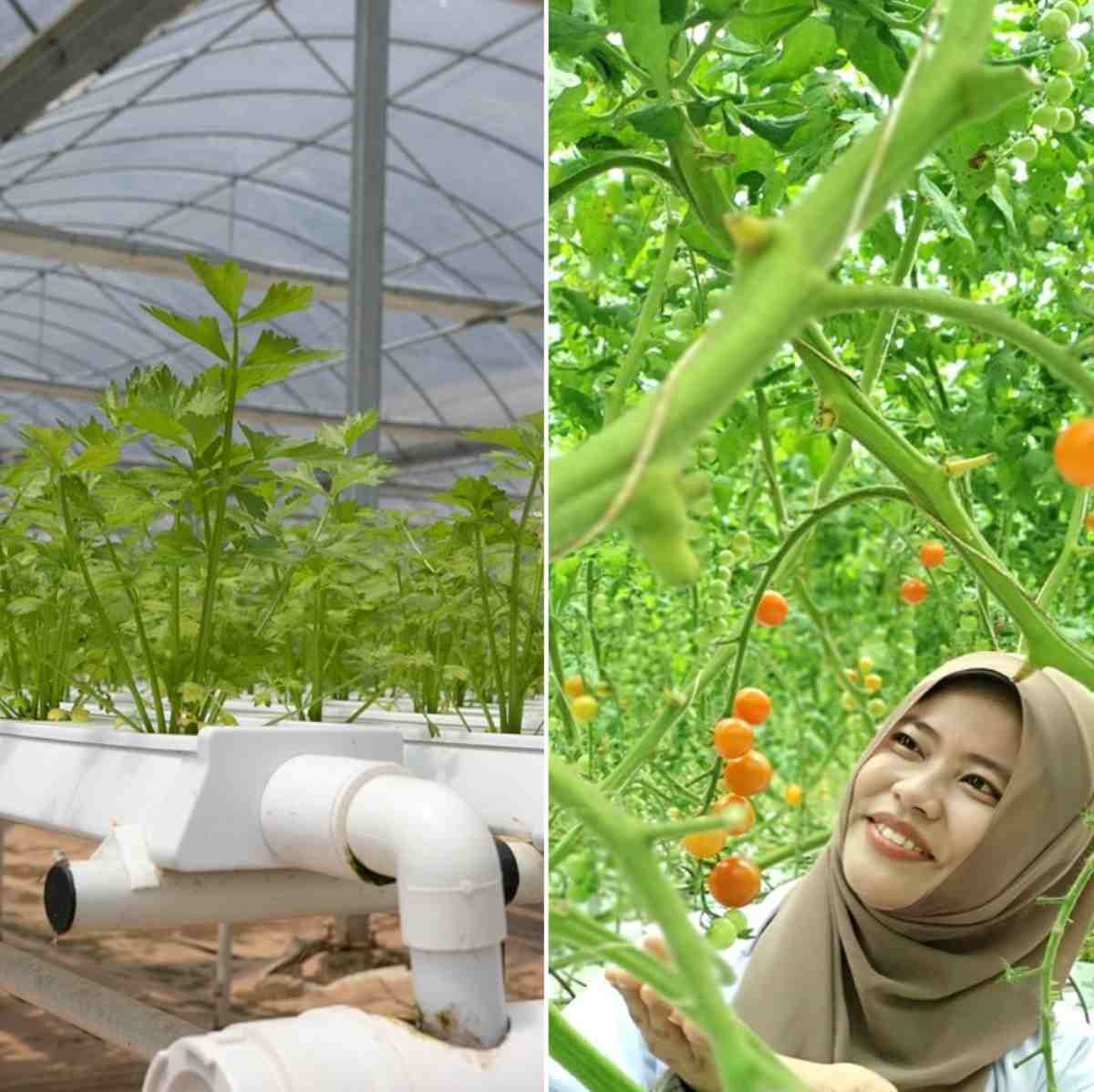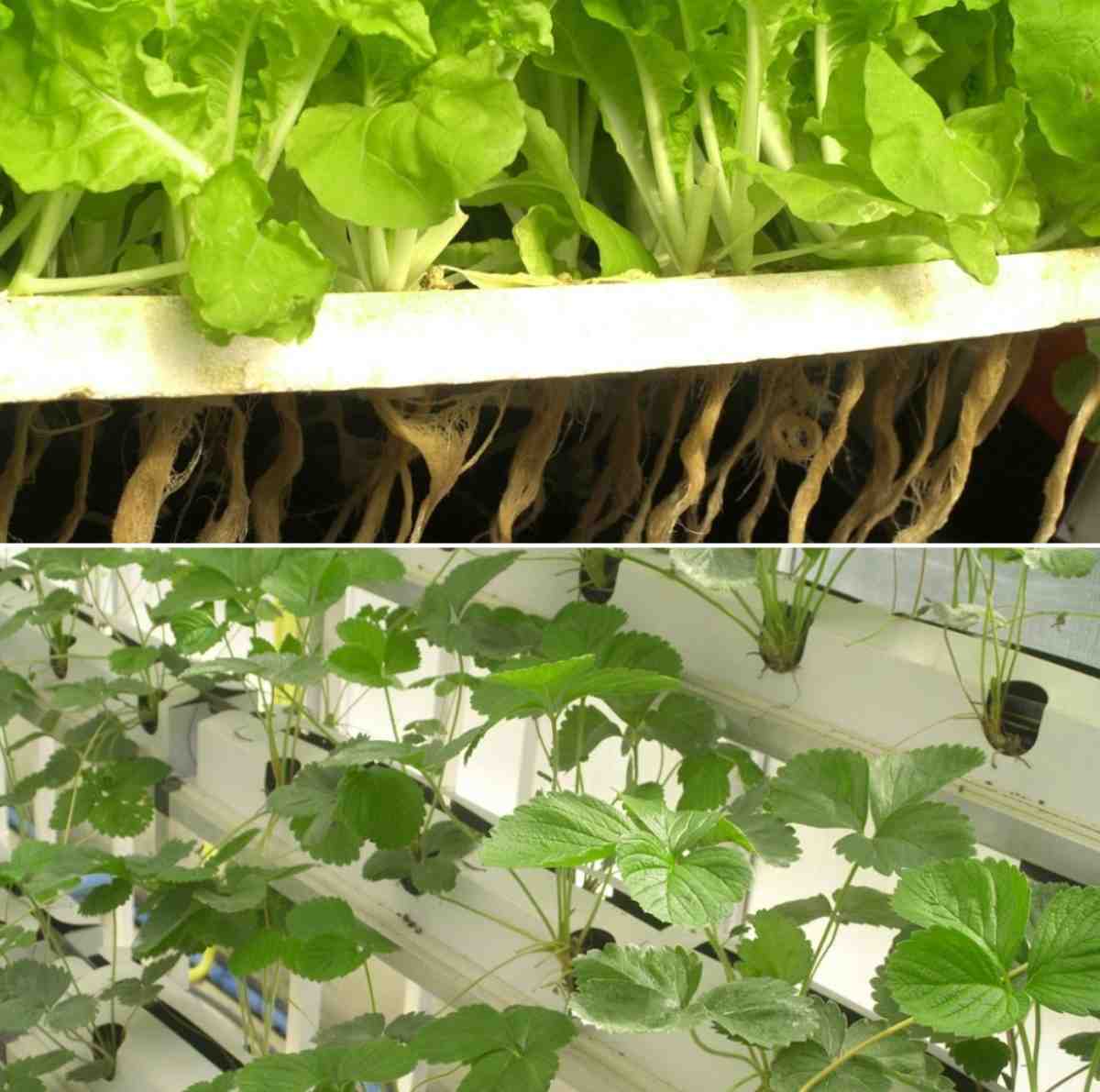Introduction to Hydroponic setup cost
The hydroponics system is a method of growing plants in a soilless solution. Hydroponics can be any nutrient solution or inert growing media such as perlite and sand anything other than traditional potting mixes or soil. Hydroponic gardening involves growing plants in a water and nutrient solution without using soil. Hydroponic gardens are very easy to start in your own home so you can grow throughout the year. There are many different styles of gardens you can build, the most common being wick systems, deep water cultures, and NFT (nutrient film techniques). With a simple build, you can easily have a garden at home.
A step by step guide to Hydroponic setup cost
Hydroponics systems are various structures like towers, trays, A-frames that hold water or other inert media, and provide places to grow plants. Hydroponics systems fall into two basic categories that are a solution (liquid) culture and an aggregate culture. In a solution system, the roots grow directly into a nutrient-filled solution. In an aggregate system, such as gravel, sand, or small clay pellets, the plant roots grow into the medium. In each method, the system supplies the three essential ingredients plant roots need to grow that are water or moisture, nutrients, and oxygen.
Advantages of Hydroponic gardening

- The benefit of Hydroponic gardening is the massively increased growth rate of most plants. It’s not uncommon for a plant to grow at least 20% faster than soil type gardening. On top of that, plants will normally yield at least 25% more than their soil counterparts.
- Plants grow faster with Hydroponics because it’s an efficient way to grow them.
- Growing plants with Hydroponics comes with many advantages, the biggest of which is a greatly increased rate of growth in your plants. With the proper setup, plants will mature up to 25% faster and produce up to 30% more than the same plants grown in soil.
- In Hydroponics, your plants will grow bigger and faster because they will not have to work as hard to obtain nutrients. All of this is possible through careful control of the nutrient solution and pH levels.
- Hydroponic plants are grown in a sterile environment. So, they do not require pesticides. Worms, bugs, birds, and other animals that create crop damage do not exist within a properly clean hydroponic setup. When you do not have to worry about pest control, you can keep crops chemical-free, which will make them healthier and more appealing to your customers.
- A Hydroponic system will use less water than soil-based plants because the system is enclosed, which results in less evaporation. Believe it or not, the Hydroponics system is better for the environment because it reduces waste and pollution from soil runoff.
In case if you are interested in: Growing Lettuce in Pots, Lettuce Plant Care.
Different types of Hydroponics systems
Different types of systems are obtainable to meet individual comfort levels in growing plants hydroponically. These contain drip, ebb and flow, nutrient film technique, water culture, aeroponics, and wick. The main types of Hydroponic systems are;
Wick Systems
A wicking system is the basic type of hydro system you can build. It’s been used for thousands of years, while it wasn’t considered a Hydroponic system back then. It’s what’s known as a passive Hydroponics system, meaning that you don’t need any air pumps or water pumps to use it. Nutrients and water are moved into a root zone via a wick, which is often something as simple as a rope or piece of felt. One key to success with a wicking Hydroponic system is to use a growing media that transports water and nutrients well. Good choices contain coconut coir, perlite, or vermiculite. Wick systems are good for smaller plants that don’t use up a lot of water and nutrients. Larger plants could have a hard time getting enough of either via a simple wick system.
Deep Water Culture (DWC)
In a DWC, you use a reservoir to hold a nutrient solution. The roots of plants are suspended in that solution so they get a constant supply of water, oxygen, and nutrients. To oxygenate the water, then use an air pump with an air stone to pump bubbles into the nutrient solution. This prevents your plant roots from drowning in the water a weird thing to think about, but it can (and does) happen to many beginner Hydroponic gardeners. Your plants are housed in net pots that are placed in foam board or into the top of the container that you’re using for a reservoir. With some Hydroponic growing media added into net pots, they provide a home for the very beginning of your root system and plant stems.
Deepwater Culture (DWC) is also known as the reservoir method, is by far the easiest method for growing plants with Hydroponics. In a Deepwater Culture Hydroponic system, the plant roots are suspended in a nutrient solution. An aquarium air pump oxygenates the nutrient solution; this keeps the plant roots from drowning. Remember to prevent light from penetrating your system, as this can cause algae to grow and this will wreak havoc on your system. The main benefit of using a Deepwater Culture system is that there are no drip or spray emitters to clog. This makes Deepwater Culture an excellent choice for organic Hydroponics, as Hydroponics systems that use organic nutrients are more prone to clogs.
Nutrient Film Technique (NFT)
The Nutrient Film Technique, which refers to as NFT, is a popular commercial Hydroponic system. Several plants are grown in channels that have a nutrient solution pumping through them and constantly running along the bottom of the channel. When the solution reaches the end of the channel, it drops back into the main reservoir and sent back to the beginning of the system again. This makes it a recirculating system, just like a deep water culture system. NFT is a type of Hydroponic system where a continuous flow of nutrient solution runs over the plant’s roots. Then, this type of solution is on a slight tilt so that the nutrient solution will flow with the force of gravity.
This system works well because the plant roots absorb more oxygen from the air than from the nutrient solution itself. While the tips of the plant roots come in contact with the nutrient solution; the plant can get more oxygen which facilitates a faster rate of growth.
Ebb and Flow (Flood and Drain)
Ebb and Flow systems are also called Flood and Drain, which are a less-commonly seen system. But they’re quite effective and can be the best choice depending on your situation. An ebb and flow Hydroponics system, also known as a flood and drain system, is a great system for growing plants with Hydroponics. This Ebb and Flow system function by flooding the growing area with the nutrient solution at specific intervals. Then, this nutrient solution slowly drains back into the reservoir. The pump is hooked to a timer, so the procedure repeats itself at specific intervals so that your plants get the desired amount of nutrients. An ebb and flow Hydroponics system is ideal for plants that are accustomed to periods of dryness. As the root system grows larger the plant grows faster as it can absorb more nutrients.
Aeroponics
Aeroponics systems are the most “high-tech” Hydroponic system setups that you can build. An aeroponic is similar to an NFT system in that the roots are mostly suspended in the air. Then, the difference is that an aeroponic system achieves this by misting the root zone with a nutrient solution constantly instead of running a thin film of the nutrient solution along a channel.
Drip system for Hydroponics
Drip systems are common in commercial operations but less common in recreational gardens. This is because they’re simple to operate a large scale but slightly overkill for a smaller garden. Regardless, they’re a great way to grow plants hydroponically that you should consider.
Determine the location for Hydroponic system
In case if you miss this: Growing Potatoes Hydroponically.

Locate the hydroponic system in an enclosed structure, such as a greenhouse or the basement of the house, or on an outdoor patio or deck. The floor must be level to ensure even coverage of water and nutrients to the plants in the system. If placing the system outdoors, protect the system from the elements, such as providing a wind barrier, and then check the water levels more due to water loss from evaporation. During cold temperature ranges, bring the Hydroponic system indoors. If placing the system in an interior room of your house, add grow lights to give supplemental lighting to the plants.
Nutrients and growing medium for Hydroponics
You will need to use nutrients a mix of primary, secondary, and micro designed for the Hydroponics system. For a variety of reasons, Hydroponic nutrients differ from nutrients or fertilizers used to feed plants growing in the soil.
Besides water, Hydroponic medium possibilities contain rock wool, small clay rocks (sometimes called hydro corn), coconut fiber or chips, perlite, sand, and vermiculite. All of these are “inert,” meaning that they don’t break down quickly, a procedure that helps supply nutrients to plants growing in soil. One Hydroponic material isn’t better than another and you just need to decide which one works best in your circumstance or best fits your gardening comfort level. And a critical factor is to avoid keeping medium like coconut byproducts from becoming too wet. The constantly soggy medium will cause the plant roots to suffocate from a lack of oxygen.
The light requirement for Hydroponic system
Different types of lights exist, but metal halide seems to be the light source of choice among many gardeners. Other types of artificial lights contain high-pressure sodium bulbs, LEDs, high-output fluorescents, and compact fluorescents. This is important that you are growing plants hydroponically indoors.
Simple start-up for Hydroponic gardens
Hydroponics growing is heavily scientific and requires a lot of knowledge and equipment. All you need is the following;
A 5-gallon bucket, 32-gallon plastic container or storage bin, or something similar. Just make sure it is not see-through so that algae don’t form inside. A piece of Styrofoam about 1/2 to 3/4 of an inch thick and larger than the opening of the bucket or container. Hydroponic grow baskets and it’s possible to use plastic strawberry baskets, home-made baskets made of string and wire, or anything similar. The idea is to give the roots a structure they can cling to but that will allow water to freely flow through the roots. A 1/2-inch pipe, tube or funnel for filling the container and plants that are sprouted and have begun to grow plant roots.
- First, cut the Styrofoam so that it fits inside the rim of the container as a lid. It must be tight enough to prevent too much light from getting into the container, but loose enough to float freely up and down a couple of inches as the water level fluctuates.
- Cut holes in the Styrofoam for the baskets and put the baskets in the holes. They must fit snugly so that the bottom of the baskets hangs down below the foam but they don’t fall through. Then, cut a hole and insert a 1/2-inch pipe, tube, or funnel at an easily-accessible spot of the foam. This will be filled with access to adding water to the system.
- Place the plants into the baskets and now fill the container with water and nutrient solution (mixing per instructions), put the lid with the plants in place, and you’re growing with Hydroponics.
- As the water level drops, add nutrients and water as needed. If growing plants indoors with lights, it’s unlikely that a deep container will lose enough during a growing cycle to need replacement.
- When the hydroponic plants are ready to harvest and compost any leftover plant debris, thoroughly clean out the container, media, and foam, and use it again.
The cost of a Hydroponic setup
You may also check this: Growing Succulents Hydroponically.

Depending on what kind of Hydroponic system you’re growing, you’ll want to research the Hydroponic farm startup cost before you get in too deep. Here, we calculate the operational expenditures of growing an indoor Hydroponic crop from seed to harvest,
So, this analysis will be based on an active ebb and flow Hydroponic flood table system that constantly recovers and recycles unused water and Hydroponic nutrients.
The rent and mortgage cost of Hydroponic setup
Rent and mortgage costs must be included in the pricing of an indoor cultivation operation because these gardens require a great deal of square footage. Indoor gardeners should rent or purchase homes with far more space than required for their normal living needs. The average price for a rental property is approximately $1,500 per month. For example, one can assume that one-quarter of the home will be used for Hydroponic cultivation, resulting in $375 per month in rent expenses.
Total rent charges for a nine-week crop is $843.75 (that is 9*375/4)
The electricity cost of Hydroponic setup
Electricity rates fluctuate greatly throughout the country with some power companies charging inflated tiered rates for high-power users such as indoor Hydroponic gardeners. For example, we take $0.13 per kilowatt-hour is the average cost of electricity. Then, our hypothetical 10,000W grow room uses approximately 5,000-kilowatt-hours a month, with a running cost of $650 per month.
A total electrical charge for a nine-week crop is $1,462.50 (that is 9*650/4)
Water cost of Hydroponic setup
The price of water per gallon can vary significantly, according to several factors bound to geography and also environmental availability. For example, the average water cost is $1.50 per 1,000 gallons. In our hypothetical 10,000W grow room scenario, a cultivator should keep a 100-gallon reservoir full at all times to keep the system functioning properly. This is because, with a 25 percent evaporation rate, one can count on losing 25 gallons a day, or 175 gallons a week, to evaporating water. Moreover, vigorously growing indoor plants in a 10,000W room can simply consume 40 gallons of water every other day or 160 gallons in a week.
In an active Hydroponics system, it’s a good idea to clean one’s reservoirs once a week to ensure a consistent pH level using another 100 gallons a week. As a result, the indoor Hydroponic gardener can count on using about 3,915 gallons of water in nine weeks for a 10,000W flower room.
A total water charge for a nine-week crop is $5.87 (that is 3915*1.5/1000)
Grow mediums and seeds cost of Hydroponic setup
The popular and affordable growing medium for an active Hydroponic system is rock wool cubes. It must be noted that the choice of rock wool cubes is purely subjective, but the example provides a logical format for pricing techniques.
For 10,000W growing set-up, let’s assume that each of the 10 means 1,000W lights will have nine plants. Six-inch rock wool cubes cost about $3.30 piece, with a total cost per light of $29.70, or $297.00 for the whole grow room.
Total grow medium expenses for a nine-week crop is $297.00.
Let’s assume that our hypothetical operation is growing heirloom tomatoes.
Two grams of excellent heirloom seeds will cost around $18.00.
The nutrients and CO2 cost of Hydroponic setup
There is a surplus of options of excellent nutrient lines on the market today, and they will all probably yield pretty good results. Each indoor gardener develops its nutrient recipe that works well for their crop. After some research, findings show one of the most affordable feeding schedules comes in at $324.00.
As a result, a low-end nutrient cost for a nine-week ebb and flow Hydroponics crop is $324.00.
The use of CO2 enrichment is not necessary for the beginner indoor gardener. Nonetheless, once one has their feeding schedule and climate perfected, the use of CO2 can greatly increase the size of crop yield. A 20-pound CO2 tank costs about $30.00 to fill and will last for about 3.5 days in a sealed room.
So, the total CO2 expenses for a nine-week crop are $540.00.
Additional materials cost of Hydroponic setup
The hydroponic cultivator has a different idea of what items are “essential” in growing a healthy crop, growers use additional materials for plant support. A 10,000W room requires six 5×15-foot pieces of trellis netting for two layers of canopy support throughout the entire grow room. The cost of this trellising is $10.00 per unit, or $60.00 total. Also, for pest control and mildew control, neem oil is an effective and inexpensive spray that can be sprayed on plants throughout their life cycle. One pint of neem oil is about $15.00.
Then, the total costs of additional materials for a nine-week crop are $75.00.
Finally, one can count on a nine-week, 10,000W, and active/ebb-and-flow Hydroponic crop costing a minimum of $3,566.12 to produce.
In case if you are interested in How to Make Money from Hydroponic Store Business.
Can I start hydroponics in terrace with just with 15000?
Yes, there are some home hydroponics kits in amazon, check.
Dear Mr. Reddy,
Thank you for including a detailed cost analysis. I am interested to look into hydroponic farming. We are a registered charity in canada and want to duplicate Lufa Farms of Montreal techniques of growing vegetable on top of our, our in future. project building in Ontario. We are at ealier stages of acquiring land from the region.
It would be nice to connect with you.
Dear Mr. Reddy,
Thanks for sharing such information, it will great if you can share the technical specification for each type of hydroponic